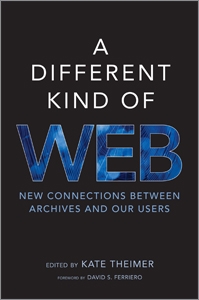Primary tabs
You don't need to be an ALA Member to purchase from the ALA Store, but you'll be asked to create an online account/profile during the checkout to proceed. This Web Account is for both Members and non-Members.
If you are Tax-Exempt, please verify that your account is currently set up as exempt before placing your order, as our new fulfillment center will need current documentation. Learn how to verify here.
- Description
- About the author
Come explore how archives are using the web to reach and interact with users, old and new, as well as serve their own management needs.
13 case studies illustrate archival practitioners' own experiences in creating blogs, wikis, and interactive websites, and contributing to sites such as Flickr, YouTube, Wikipedia, and Second Life. The themes in these case studies are framed by longer analytical essays that reflect on the larger implications of social media for archives -- the "different kind of web" archivists are forming with their users. Learn how social media are changing how archivists conduct outreach, how the concept of authority is adapting and evolving, and the opportunities social media present for enhancing and streamlining traditional archival processes.
In addition, a series of short essays present the viewpoints of some of the primary users -- historians, educators, students, and genealogists. The volume concludes with a group of reflections on the larger implications of social media for archives, including the impact of Web 2.0 on diversity in the archival profession and the archival record.
This book is for practitioners looking for reports on real-world implementations of social media tools; students in archives and history programs interested in implementation and management issues, and the broader theoretical and systemic issues raised by the use of social media; and historians, history faculty, professionals in related fields, such as libraries and museums, and those who study the use of the web will find an encapsulation of the current approach of the archival profession.



